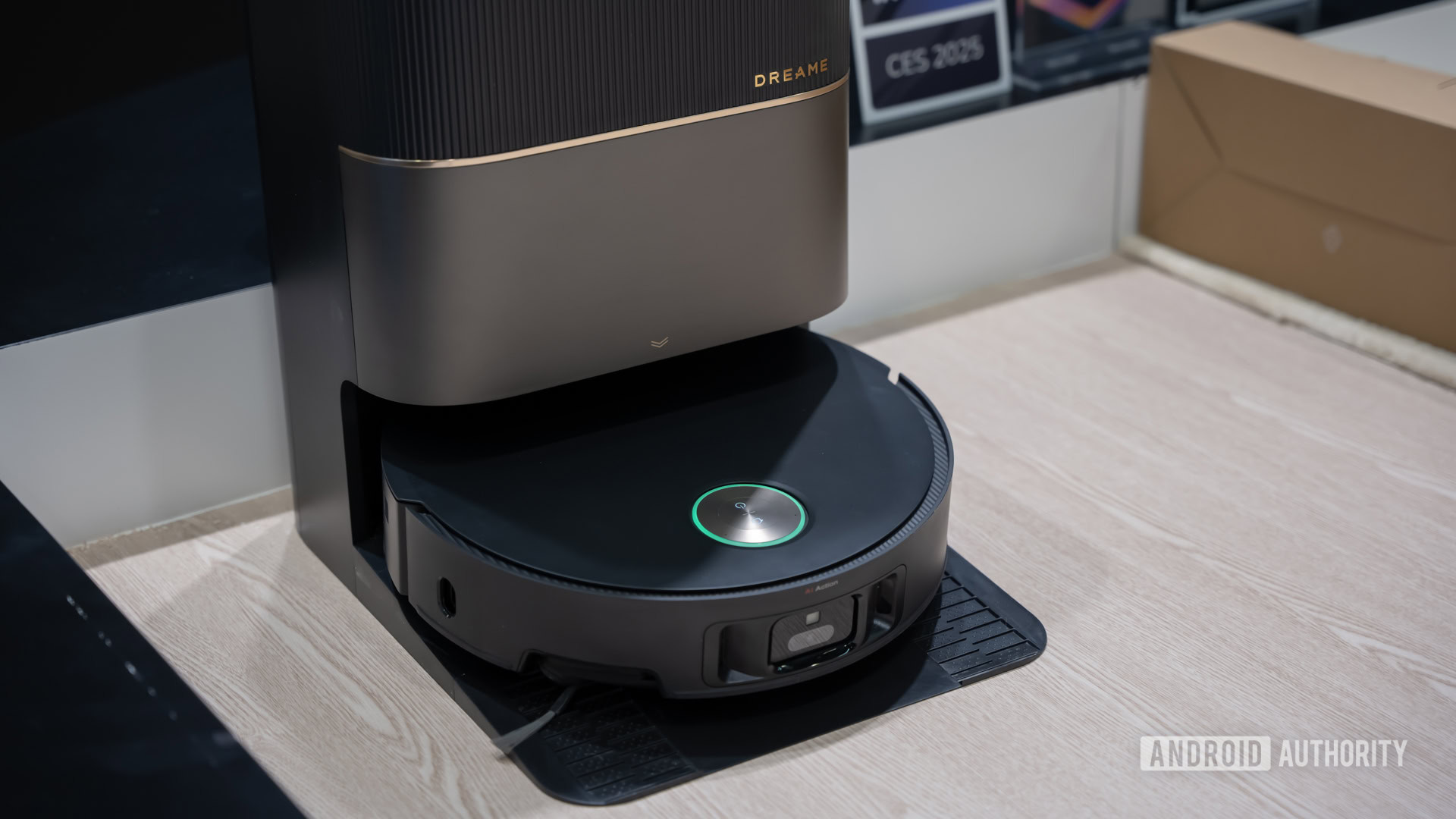Robert Triggs / Android Authority
Google’s Pixel 10 has plenty going for it — but top-tier performance remains as elusive as ever. It’s been this way for years, but rather than closing, the gap appears to have grown between the latest Tensor G5 and Snapdragon 8 Elite Gen 5. With smartphones now defined by AI workloads and gaming prowess, the ballooning divide between Google’s Tensor and Qualcomm’s Snapdragon has never been more telling.
Recent Geekbench 6 and 3DMark benchmark results don’t paint Google’s latest processor in the best light. Qualcomm’s finest appears to be significantly faster, with over twice the multi-core CPU performance potential and graphics capabilities that are around 2.5x faster than Google’s.
On the one hand, this performance gap might not make much difference to browsing the web, swiping through social streams, or other applications that already run silky smooth. However, such a chasm in gaming performance with the impending bridging of phones and laptops is hard to ignore.
But why does Snapdragon come out so far ahead of Google’s Tensor project? To find out, we need to peel back the lid and see what makes these chips work.
Don’t want to miss the best from Android Authority?


It’s an Arm wrestle
The central processing unit (CPU) is the main “brain” of your phone’s chipset, and recent developments have given Qualcomm’s Snapdragon a major boost. Qualcomm now designs its CPU cores in-house, under the Oryon branding, allowing it to accelerate its design in scale and size compared to Arm’s ready-made CPU blueprints — known as IP — that most chipmakers license rather than design themselves.
While all smartphone chips are based on Arm’s architecture, each CPU core’s building blocks and capabilities differ, with their own power, performance efficiency, and size trade-offs. This is at the heart of the discrepancy between Tensor and Snapdragon — and Qualcomm has chosen to take its CPU design in a slightly different direction from what its rivals buy in.
Qualcomm’s cores are bigger and more powerful — and that translates into die size, yields, and cost per chip.
From what we know, Qualcomm’s custom Oryon CPU cores have two key design focuses. The first is that they’re clocked really quite high for mobile CPU cores, hitting a very fast 4.6GHz peak on the Prime core and 3.62GHz on the six Performance cores. By comparison, the Tensor G5 manages 3.78GHz on its single big Cortex-X4 core, 3.05GHz on its five middle A725 cores, and 2.25GHz on its two A520 efficiency cores. This is only for short bursts, but reveals that Qualcomm has spent considerable design effort on power rails, clock gating, and probably cache, too.
But clock speed is pretty meaningless when comparing different core microarchitectures. It’s more noteworthy that Oryon is reportedly a very big core, insinuating that it’s packed with cache and execution units that allow it to crunch numbers at lightning speed. However, this comes at a significant silicon expense that’s likely wasted when pruning your emails. Tensor, by comparison, is using just a single “big” Cortex-X4 core from Arm, paired with seven smaller and more efficient cores of various sizes.

Robert Triggs / Android Authority
Qualcomm also makes its own graphics component in the form of its in-house Adreno GPU architecture. Long departed from its original ATI design (Qualcomm bought out AMD’s mobile graphics division in 2009), Adreno has been free to dabble in Tile-Based and Immediate Mode Rendering, slice architecture designs, and the introduction of ray-tracing to suit Snapdragon’s mobile design goals at will. If it wanted more performance with less regard for die size and power, Qualcomm could do that. In fact, it has done so to scale Adreno up for laptops.
Again, Google relies on purchasing existing IP from the handful of mobile GPU vendors. While these partners offer capable and powerful IP, their high-end goals are not necessarily aligned with Google’s. Case in point, Tensor always opted for a far smaller, more mid-range GPU layout than Arm’s Mali offered at the top of its range. It also ignored ray tracing, which, while still niche today, is becoming a key differentiator in top-tier mobile gaming. Google recently moved to a decidedly mid-tier PowerVR core from Imagination Technologies in the Tensor G5, again without adopting ray-tracing.
Google has historically deprioritized graphics performance in favor of affordability.
The key consideration here is that bigger, more powerful CPUs and GPUs take up silicon space, which has become increasingly expensive with the move to tiny, efficient nodes like TSMC’s 3nm that Google and Qualcomm both use.
Qualcomm is spending a lot on silicon to blow past its competitors, while Google is deliberately avoiding this arms race. Apple spends big, too, and it clearly works, as the two duke it out at the top of the pack. However, the price is paid in significantly more expensive chip manufacturing costs — a price Google seems less prepared to pay. Google is reportedly targeting ~$65 per chip — compared to Qualcomm’s rumored $150+ pricetag it charges partners — and wants to accomplish this via a smaller silicon footprint.
What can Google do about any of this?

Robert Triggs / Android Authority
Even though Google might have a microarchitecture “disadvantage,” it’s not helping itself with its component choices. The Tensor G5 still uses 2023’s Cortex-X4 big CPU core like the G4, despite Arm announcing the X925 a full year ahead of this latest chip. Google has often stuck with older cores for a couple of years, though it’s not always clear if this is a conscious effort or the result of missed design goals.
Either way, this sluggish pace of design is reflected in its marriage to a more traditional big, middle, little CPU core layout. Meanwhile, high-end competitors Apple, Qualcomm, and MediaTek all dropped the little core idea last year and have focused on ramping up mid-tier performance.
An easy win would be to accelerate adoption of the latest CPU/GPU parts, but that would cost more.
Thankfully, the Tensor G6 is rumored to jump to the new Arm C1 series, sporting a more Snapdragon-esque 1+6 layout that’ll move closer to competitor design ideas, though without a twin big core pairing. However, we do not know if it’ll leverage Arm’s best C1-Ultra core or use the 35% smaller Premium variant that would better align with its area and cost goals.
But what Google gives with one hand, it takes away with the other; the Tensor G6 is expected to move from its new PowerVR DXT cores to the budget-friendly CXT model — the GPU that was supposed to debut in the Tensor G4! According to Google, performance will be about the same as the current generation, but with a smaller area footprint. If true, this is clearly a conscious design choice that runs contrary to catching up with its rivals.
I mention all this because although Google certainly has options in terms of beefing up its SoC design, it seems far more focused on saving costs — and that puts a very firm lid on what the company can realistically achieve. Building fully-custom competitive CPU and GPU parts is well beyond the realms of possibility, not least because it would take years, be fraught with difficulties, and require a mammoth cash and talent injection. Qualcomm bought Nuvia for an extraordinary $1.4 billion to help build Oryon, and there’s no way Tensor is worth that much to Team Pixel.
A more reasonable course of action would be for Google to spend more on bigger, more powerful, more cutting-edge parts from partners like Arm and Imagination Technologies. However, that would require a major change in Google’s cost-sensitive goals for Tensor. Furthermore, that chip already exists; Google might as well buy the MediaTek Dimensity 9500 if it wanted a high-performance chip built from off-the-shelf components and save itself the hassle.
Tensor bets the house on AI

Joe Maring / Android Authority
It’s becoming a cliché to say every year, but Google isn’t building Tensor to top the benchmark charts. Raw silicon isn’t Google’s endgame. Tensor’s design choices make a lot more sense once you look at where Google’s really investing: AI.
Pixel fans will point to Google’s solid foundations in photography and lead in on-device AI tools as proof of the project’s success. I think that’s true to some extent, and iPhone users would agree that designing chips hand-in-hand with your commercial products means you can optimize and push performance for the tools you really want.
If Pixel prices creep up without a clear performance payoff, Tensor might soon run out of excuses.
But it’s not a given that Pixel obtains better results from Tensor than it could achieve on other silicon platforms. Plenty of phones tout amazing photography engines, Gemini Nano appears to run just fine on Snapdragon phones, and loads of Google AI tools still run in the cloud anyway.
I’d argue that Google’s benefits from Tensor are as much about in-house toolchains and bespoke software development as they are about what goes into the silicon. On-device speech transcription and translation, as well as call screen, are two examples. Google is invested in making apps that leverage its silicon, but it could have done that with other platforms. It’s not like Tensor has imaging or AI processing pipelines that are orders of magnitude better than those of its competitors, and the chip has struggled with poorer modems and battery life in exchange for these “wins.”

Robert Triggs / Android Authority
On balance, Tensor’s current status is largely due to financial priorities. Google doesn’t want to spend a fortune on silicon development and manufacturing; it’s content to offer “good enough” performance while leaving resources on the table to invest in software tools that set it apart from its competitors. I have a lot of time for that way of thinking.
Snapdragon 8 Elite series prices are only increasing, putting pressure on manufacturers to raise handset prices further or compromise on other components that are arguably more important to the overall consumer experience. Since most people won’t notice much difference between Tensor and Snapdragon in daily use, Google’s approach feels more sensible for building well-rounded flagships that don’t cost the earth.
Ultimately, Tensor was never built to top benchmark charts — it’s Google’s experiment in redefining what “smartphone performance” means. By prioritizing AI smarts over raw silicon, Google is betting that the future of mobile computing will be defined by usefulness rather than sheer power. But with consumers still lukewarm on AI and enthusiasts growing restless over Google’s thriftier chip strategy, the wager looks riskier by the year. And if Pixel prices creep up without a clear performance payoff, Tensor could soon run out of runway.
Thank you for being part of our community. Read our Comment Policy before posting.









